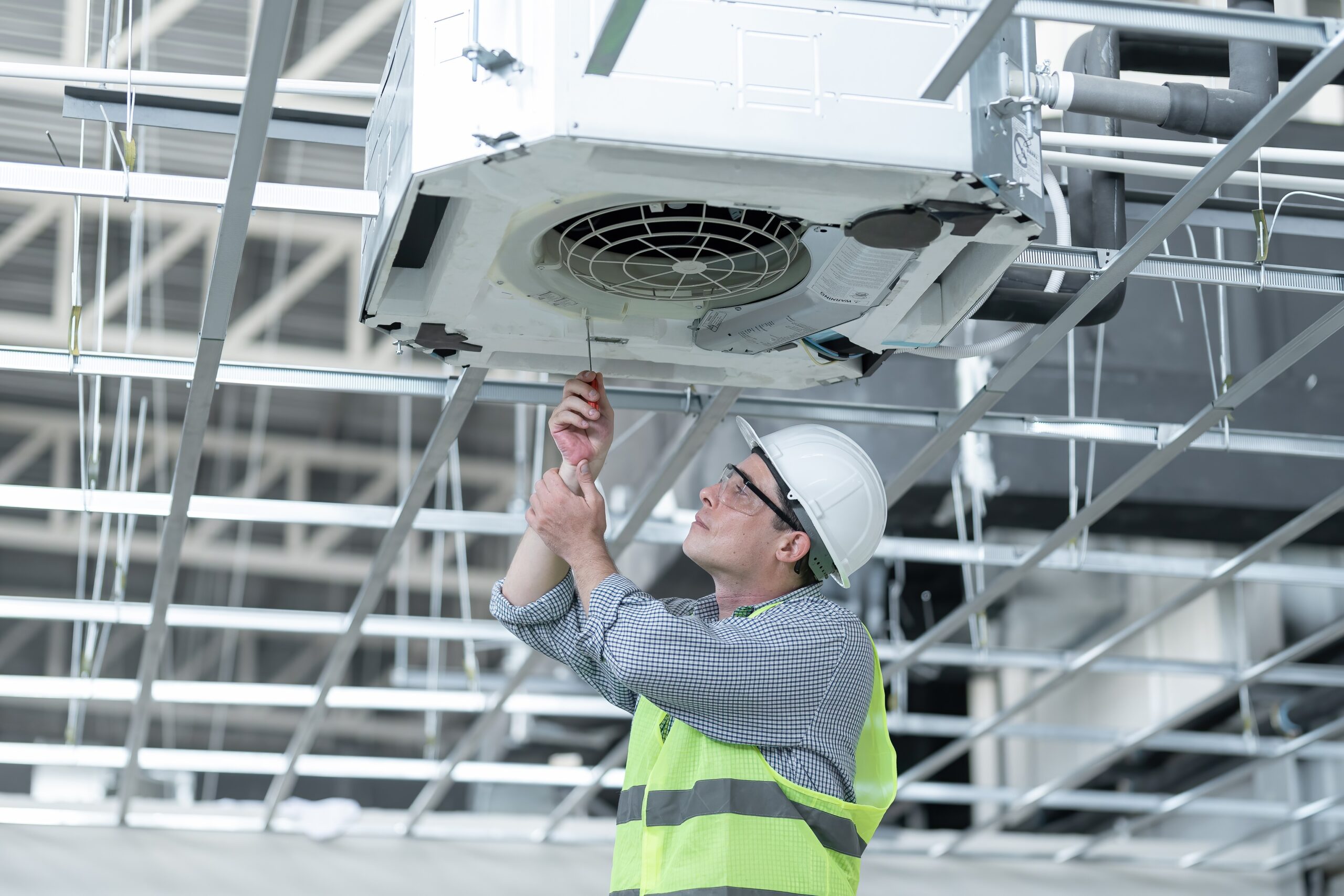
Serving as the backbone for countless enterprises, spanning from hospitals to factories, commercial facility management is both mission-critical and intensely complex. Facility managers must synchronize intricate systems, technicians, vendors, and internal stakeholders to maintain environments that enable operations to run smoothly around the clock.
Seemingly simple breakdowns in cleaning schedules or temperature levels can significantly disrupt productivity and safety when scaled across properties that might span as large as several hundred thousand square feet. As a result, even the savviest facility leaders stumble over chronic hurdles — like inconsistent service levels, inflated budgets, high technician turnover, and drifting sustainability targets — that hinder operational excellence.
While these barriers can slow progress, this article provides practical strategies to overcome them. Let’s explore proven ways that commercial facility managers can optimize service delivery, stabilize budgets, and reach their efficiency objectives.

What Is Commercial Facility Management?
At its core, facility managers spearhead the behind-the-scenes activity keeping workplaces running. But their indirect impact stretches much further.
A facility manager’s duties include coordinating cleaning, maintenance, and grounds crews, as well as managing sophisticated building systems like HVAC equipment, generators, and parking access controls. Facility managers are also tasked with managing bids and overseeing outside vendors, including plumbers, electricians, landscapers, and security.
“Exceptional facility management requires synchronizing complex systems, vendors, and staff to maintain productive environments 24/7,” says Richard Nuttall, CCS’s President. “It’s a delicate balancing act to consistently deliver service while controlling costs, retaining reliable talent, and complying with sustainability regulations.”
It’s a delicate balancing act to consistently deliver service while controlling costs, retaining reliable talent, and complying with sustainability regulations.Richard Nuttal, CCS President
With commercial buildings easily comprising an enterprise’s largest capital expenditure, facility teams must maintain exceptional operations to maximize property valuations and functional lifespans. In fact, strategic space management is crucial and can lead to cost savings as high as 30%.
What Are the Main Functions of a Facility Manager?
While specific tasks and technologies differ by industry, from education and healthcare to manufacturing and industrial environments, four central pillars universally recur in facility management:
- Operations & Preventative Maintenance Oversight: Directly coordinating technicians, vendors, inspections, and repairs with focus on occupant experiences and cost savings
- Strategic Space Planning & Management: Repurposing layouts and building infrastructure to mirror fluctuating usage levels, workstyles, and business priorities
- Sustainability & Energy Management: Futureproofing properties by reducing resource usage, emissions, and utility costs, which is often accomplished through equipment modernization, automation upgrades, and conservation policies
- Budget & Lifecycle Cost Planning: Developing short- and long-term operational and capital spending roadmaps that optimize total cost of ownership — not just upfront price tags
Guide to Successful Commercial Facility Management
Let’s address some of the persistent facility management pitfalls that hamper global enterprises of all sizes and in all sectors, which include:
- Service quality
- Technician reliability
- Cost efficiencies
- Meeting sustainability initiatives
These challenges can be effectively overcome with the following commercial facilities management best practices.
1. Reduce Downtime with Proactive Maintenance
Disjointed maintenance programs trigger frequent outages and costly emergency repairs, which are disruptive to both occupants and core operations.
Avoid this by implementing a comprehensive preventative maintenance program and documenting lifecycle replacement recommendations. By actively maintaining equipment continually — instead of making reactionary repairs — facility managers can maintain a high level of service quality and responsiveness with minimal downtime and without having to replace equipment frequently.

2. Strengthen Your Technical Workforce
Attracting, growing, and retaining top talent remains imperative as demand for skilled trades surges industrywide.
Facilities leaders can mitigate turnover risks and improve efficiency by directly training technicians with the equipment they will be using daily. This direct exposure to field equipment improves the diagnostic accuracy, minimizing errors and reducing downtime.
If your organization lacks internal training resources, consider partnering with external providers to ensure your technicians receive the skills they need. For example, CCS’s First Coast Technical Academy, provides instructor-led, hands-on training on equipment that mirrors what is most often seen in facilities in order to upskill technicians and prepare them for real-life scenarios.
In addition, mastering technician recruitment is critical for building exceptional teams. Consider hiring an integrated FM provider that uses a self-delivery approach to build a customized technician team on your behalf. Or, if you prefer to manage everything in house, an experienced facilities management consultant can craft a custom workforce strategy that will help you strengthen recruitment, training, and career development to unlock your workforce’s true potential.
3. Reduce Facility Costs
Outdated systems and processes that drain resources can significantly impact even the most robust budgets, but there are steps facility managers can take to cut costs. These involve optimizing multiple areas to improve efficiency, including the following:
- Conduct energy audits to identify savings opportunities and upgrade or commission systems for improved performance
- Review vendor contracts to ensure competitive rates, streamline services, and reduce redundancy
- In-source a dedicated technician team or utilize an integrated facility management (IFM) provider to enhance service quality and reduce reliance on potentially costly third-party vendors
- Integrate energy management systems (EMS) and smart building technologies to monitor and automate energy use as well as enhance operational efficiencies
- Implement predictive maintenance to prolong equipment lifespan, reduce downtime, and minimize costly emergency repairs
- Leverage bulk purchasing or multi-site agreements to cut supply and service expenses
4. Develop a Clear Sustainability Plan
Ambitious organizational emissions and energy reduction targets require proactive strategies. First, develop a multi-year sustainability plan with a net-zero roadmap. Next, seek reputable RHVAC/EMS/MEP engineering consultants to implement upgrades that help the facility qualify for substantial utility rebates, tax credits, and subsidies that offset costs. From there, maintain focus on continually driving down consumption. With a clear plan for the facility, sustainability and compliance targets can become achievable.
Expert Consulting Tailored to Your Unique Facilities
The recommendations above can empower facility managers to overhaul maintenance programs, retain top talent, curb budgets, and reach sustainability targets, but sometimes even the most experienced FM teams need expert assistance.
That’s where CCS (City Consulting Services) comes in. With our 40+ years of global FM experience, we can help assess your property portfolio, assets, and operational capabilities to engineer a transformation plan that bridges your present management obstacles with your vision for the future — and even help you deliver on that plan. Learn more about CCS.

 2016: City US is established in North America, in partnership with Southeastern Grocers (SEG), servicing over 750 supermarkets across 7 southern states.
2016: City US is established in North America, in partnership with Southeastern Grocers (SEG), servicing over 750 supermarkets across 7 southern states. 1985: Willie and Susan Haughey establish City Refrigeration Holdings (UK) Ltd in Glasgow, UK.
1985: Willie and Susan Haughey establish City Refrigeration Holdings (UK) Ltd in Glasgow, UK. 2009: City Australia launches in Melbourne, in partnership with Coles, servicing over 700 supermarkets across the country.
2009: City Australia launches in Melbourne, in partnership with Coles, servicing over 700 supermarkets across the country. 2015: City Asia launches in Kuala Lumpur, Malaysia, in partnership with Dairy Farm, servicing over 205 supermarkets across the region.
2015: City Asia launches in Kuala Lumpur, Malaysia, in partnership with Dairy Farm, servicing over 205 supermarkets across the region.